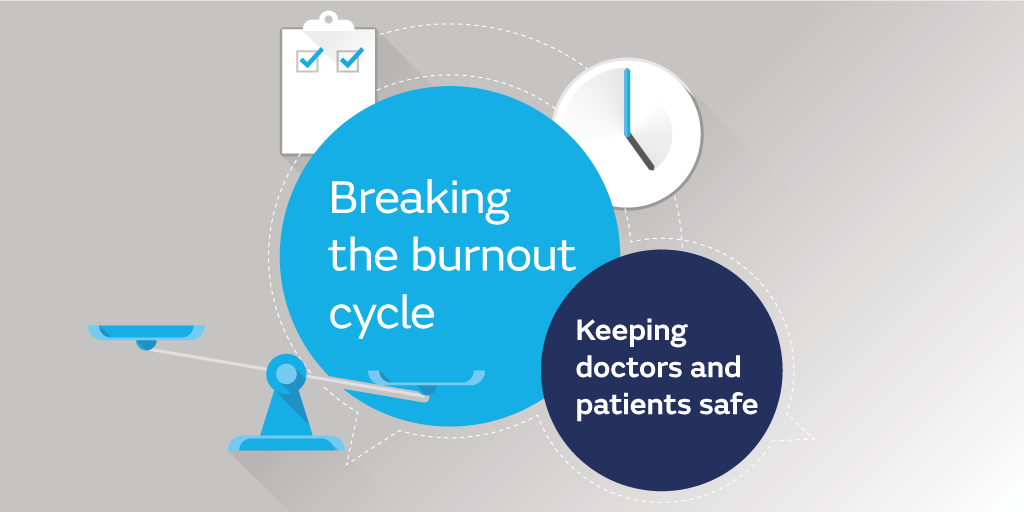Non-compliant patient sues doctor: whose fault is it?
Post date: 09/07/2019 | Time to read article: 4 minsThe information within this article was correct at the time of publishing. Last updated 03/10/2019
Doctors and nurses are governed by professional bodies that provide ethical guidance on good medical practice – the general public are not. However, patients have responsibilities under the NHS constitution.
Is it therefore possible to define or establish patient responsibility? In an ideal world, a patient should follow the doctor’s advice, and the doctor (or healthcare organisation) should have a system in place to ensure appropriate follow-up.
Case example 1:
Mr A had slightly raised blood pressure and was not keen on taking antihypertensive medications. His renal function was normal. Dr B gave him the appropriate lifestyle advice and advised a review in six months’ time. Mr A did not return.
Five years later, Mr A had a stroke and was found to have hypertensive nephropathy. He brought a claim against Dr B and the practice for not sending him a reminder or invitation.
It was accepted that Dr B failed to enter the diagnosis code ‘hypertension’ to Mr A’s record, meaning Mr A was lost to automatic system recall for an annual blood pressure check. The claim was settled for substantially less than pleaded due to the patient’s contributory negligence.
A recent Medical Protection social media study found that 73% of respondents felt that it was the patient’s responsibility to ensure follow-up appointments are adhered to. Only 27% thought otherwise.
Contributory negligence is a legal concept where a person suffers injury or harm as a result partly of his/her own fault, and partly the fault of another(s). However, a claim will not solely be defeated by reason of fault on the part of the person suffering injury or harm if there is established negligence by another party. Therefore, contributory negligence often operates as a partial defence, whereby the courts can apportion negligence regarding the associated injury or harm between the parties.
Looking at evidence
The burden of proof is on the defendant to demonstrate:
1. The claimant failed to take proper care in the circumstances for their own health and well-being.
2. The failure to take care was a contributory cause of the injury/harm they suffered.
This principle is also applicable in clinical negligence claims.
Doctors and patients should be working in partnership – both with their own responsibilities. For example, the patient needs to communicate their symptoms and medical history honestly, while the doctor needs to ensure the patient is fully informed on the proposed treatment or management plan. Whilst doctors clearly cannot be expected to ensure compliance with every patient, a ‘reasonable’ system should be in place to ensure delivery of high quality healthcare. All decisions should be made jointly, including when and why the patient should return.
A patient of course has the right to refuse any investigation or treatment as long as they have the capacity to do so. The reasons for such refusal should be explored if possible and clearly documented. A doctor should also explain the risks arising from the patient’s decision to enable decisions to be made from a fully informed position.
In cases similar to the case example above, the patient’s contributory negligence can be argued in defence of the doctor. If a claim is being litigated in court, ultimately it is for the court to decide if there was any negligence on the part of the doctor and what (if any) contributory negligence there was on the part of the patient.
It is also not uncommon for patients to argue that had they been properly informed of the potential complications of a particular condition, they would have complied with the doctor’s advice. For example, patients not complying with a diabetes follow-up may argue that they were not warned that poor control could lead to blindness.
Other claims scenarios
Other examples where contributory negligence is sometimes considered include:
- Abnormal blood result where a doctor marks ‘Abnormal – make an appointment to see a doctor’, and communicates this to the patient, who then fails to make an appointment. The abnormal blood result is therefore not followed up on, as the patient may be an infrequent attender or have attended for unrelated problems.
- Parental failure to bring a child in for their MMR vaccination. The child subsequently catches measles and develops sepsis, requiring ITU admission. The parents allege a delay in diagnosis of sepsis.
- A new patient with a significant past medical history joins a practice, but their records are not received by the practice. The patient fails to disclose certain crucial information – or provide correct information – which impacts on the immediate care that is provided.
- Failure to attend Emergency Department or call 999 as advised by the doctor.
- Reluctance to attend hospital for admission due to inconvenience (childcare or pets). Alleges that the doctor failed to emphasise the potential serious consequences of not being hospitalised.
- Failure to request repeat medications. Claims the doctor did not inform them that the medication needed to be taken long-term and not just as a one-off course, like antibiotics.
- Hospital consultant writes to the GP stating that the patient has been advised the need for repeat investigation within a certain timeframe, which is to be arranged via the GP (eg blood tests, endoscopy or x-ray). The same letter is copied to the patient, but they do not attend the practice to discuss or request this. The letter is then filed by the practice without action, assuming the patient would attend for further discussion. A sinister condition is subsequently diagnosed, but because of the actions of the practice and patient, the diagnosis is delayed, which impacts the treatment options.
- Hospital or secondary care clinicians advise that a patient see their GP for an opportunistic finding unrelated to the particular specialty but the patient did not
- Patients did not attend hospital follow-ups or screening programmes, then alleges failure to send reminders
Every case is different and should be assessed based on its own merit. In practical terms, patient contributory negligence is more often used to negotiate a more favourable settlement in claims where defence is deemed unlikely to succeed, instead of as a sole defence when a doctor’s action is deemed indefensible. Most claims are settled or discontinued before litigation in court. If a claim involving contributory negligence is litigated in court, it is ultimately for the court to decide.



.png?Status=Master)


